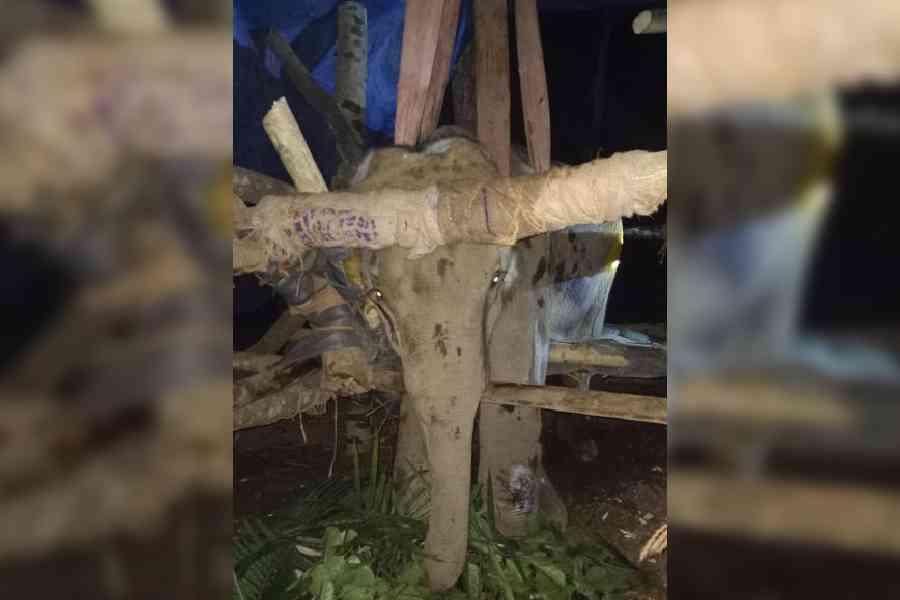A four-member team of veterinary experts from Thailand on Wednesday started the treatment of the female wild elephant which was afflicted by a vector-borne disease.
The Thai team is treating the elephant in the Bagdogra forest near here under the supervision of vets and officials of the Kurseong forest division.
“The elephant is responding to the treatment. We are hopeful that it will survive the infection,” said Devesh Pandey, the divisional forest officer of Kurseong.
The seven-year-old female elephant has been quarantined for the past 18 days with foresters providing treatment to its right hind leg and fore leg which were infected
by trypanosomiasis.
The infection, which left the elephant weak, had prompted representatives of Jumbo Troops, a social organisation working on elephant conservation, to communicate with the Save Elephant Foundation, a Thailand-based organisation that works on ailing elephants.
The foundation had responded to the call and sent a four-member team that reached here yesterday (on Wednesday). “Three vets of the forest department are working with the team,” said a source.
Pandey said the elephant was shifted to a better place inside the forest on Wednesday night so that other animals didn’t disturb it.
“We also wanted to avoid the risk of the infection spreading to other animals in the forest. X-rays of the ailing elephant’s infected parts were done to find out the extent of the disease,” said the DFO.
The vets from Thailand have administered medicines to the affected legs and plastered the same. Saline and other fluids are also provided to the animal regularly.
“One of the major problems is that the elephant could not stand properly as the disease infected the joints of its legs. The infection of the hind leg is improving. Now, we are trying to make a prosthetic arm for the foreleg to help the elephant stand on its own,” added Pandey.
After detecting infection in the elephant, foresters are trying to find out if any other wild animal in the area has been infected with the parasite,
sources said.
The disease was found rarely in north Bengal.











